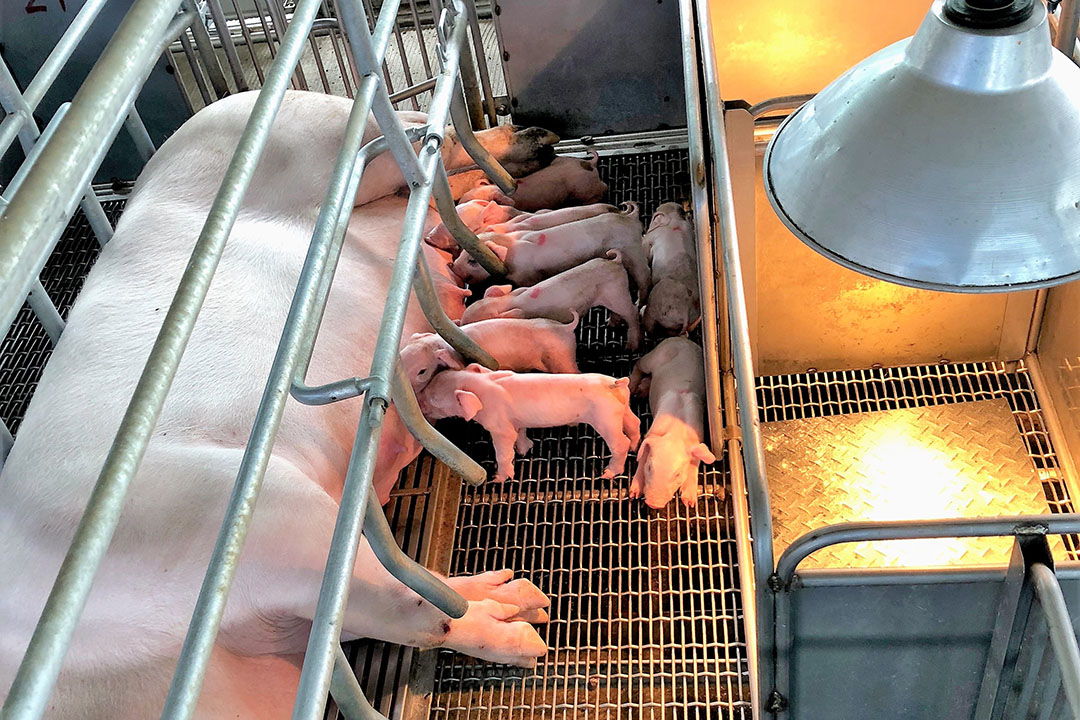When early feeding means better health

A new feeding concept goes against the belief that new born piglets don’t eat from day one. Ready to use, the gelified porridge prepares the gut of newly born piglets for feed consumption and growth with impressive results on the reduction of neonatal mortality and improvement of average daily gain. Field results speak for themselves…
Post-natal mortality in pig production remains high in most regions of the world either because of the increasing prolificacy of sows (so called hyper prolificacy) or due to an insufficient sanitary status in the farrowing unit around piglet management (colostrum management, housing, batch management, etc). It is also public knowledge that the intestine and gut health plays a major role in the immune status of young animals and contributes to the optimal growth performance. The objectives of breeders is obviously therefore, to improve the number of weaned piglets with good gut health conditions.
The challenge to entice piglets to start early feeding has been tackled by Porcistart. The motivation of young piglets to consume feed depends on their physiological status, the feed distribution system, the types of ingredients used and their palatability, the quality of water and the teaching that happens through mimicking the behaviours of the sow. All those elements have been taken into account by Hervé Gabillet, inventor of the product, by working on 2 key points:
- the porridge gel
- an appropriate tray to deliver
Importance of consistency
The porridge gel is similar to human baby food, with 33 ingredients formulated to minimise inflammatory phenomenons to properly balance the between lactobacillus flora and clostridium flora. Without this proper balance, sanitary and metabolic incidents are to be feared which will have a direct impact on the mortality and reduction of growth. The gel texture has been chosen to increase the palatability as well as facilitate the gut assimilation and aim at stimulating consumption in the first days of age of the newborns, their digestive comfort and support their immune system.
4 major ingredients provide the nutritional profile of the gel:
- algae extracts act as a source of omega-3 fatty acids to act on the immune system,
- calcium butyrate whose effects on the intestinal maturation have been described while reinforcing immune status and controlling pathogenic flora and feed consumption;
- polyphenols from plants origin (green tea extracts), known for their anti-oxidative functions and source of alkaloids, including caffeine which is a cardiac and respiratory tonic;
- lactoserum protein concentrate, rich in immunoglobulines, lactoferrines and lactoperoxidases.
In addition, the gel has a non-sticky texture to avoid losses from piglets stepping into the tray and thanks to a pH of 3.8 the gel remains stable and fresh over time.
Optimised tray design
The tray itself was developed to facilitate the exploratory behaviour of piglets and the narrow shape avoids them to lay in it and waste the product. Light, the tray can be easily clipped on a rubber mat that is also washable for further usage. This new concept is not a milk replacer but on the contrary a supplement to maternal milk to help piglets in case of insufficient milk being provided by their mother. It is also meant to be given in order to improve the digestive maturity of piglets. Placed near the head of the sow in the farrowing pen, piglets will easily mimic the behaviour of the sow and start discovering the gel as of day one. Even if consumption is low in the first 2 to 3 days, which is normal, it increases over time and is strongly dependent on the milking performance (in quality and quantity) of the sow. Consumption may vary a lot between litters as milk performance varies from one sow to another as well as the heterogeneity of the piglets inside the litter. Feed consumption during farrowing influences the weight at weaning around 28 days but it also provides a good indicator of what nursery performance could be expected. Research shows that +100g/day of feed intake during nursery leads to +500g of weight gain during the nursery phase.
Many trials have been conducted from Europe to Japan and South East Asia over the last years. Globally, all trials show similar trends in results with a reduction of mortality in a range of 5% to 48% depending on farms and countries. The average is a 32.5% reduction in mortality across 12 studies carried out in 4 different countries on 6,160 piglets and average daily gain improved in a range of 4% to 20% in similar studies. Beside these results, major observations report a better homogeneity in the size of piglets.
This new feeding concept tends to go against the belief that new born piglets don’t eat from their first day. Even if the first 100g inside the tray will not necessarily be eaten the first day, it helps with the learning curve of the piglets and the discovery process as shown by the sow as the quantity available stimulates the curiosity of the piglets.
Regarding economical gain, the CTPA in Britannia, France during one trial showed a gain of € 74.82/sow/year thanks to the reduction of mortality from 14.6% to 7.5% without taking into account the improvement of average daily gain. The porridge makes life easier for the breeders as no preparation or mixing is needed, just a refill once or twice a day. It is currently available in South East Asia in countries like Taiwan, Thailand, South Korea, Philippines, Vietnam. It will be available as of 2019 in Mexico and 2020 in China.
Author: Alexis Goux, Virbac Industries











